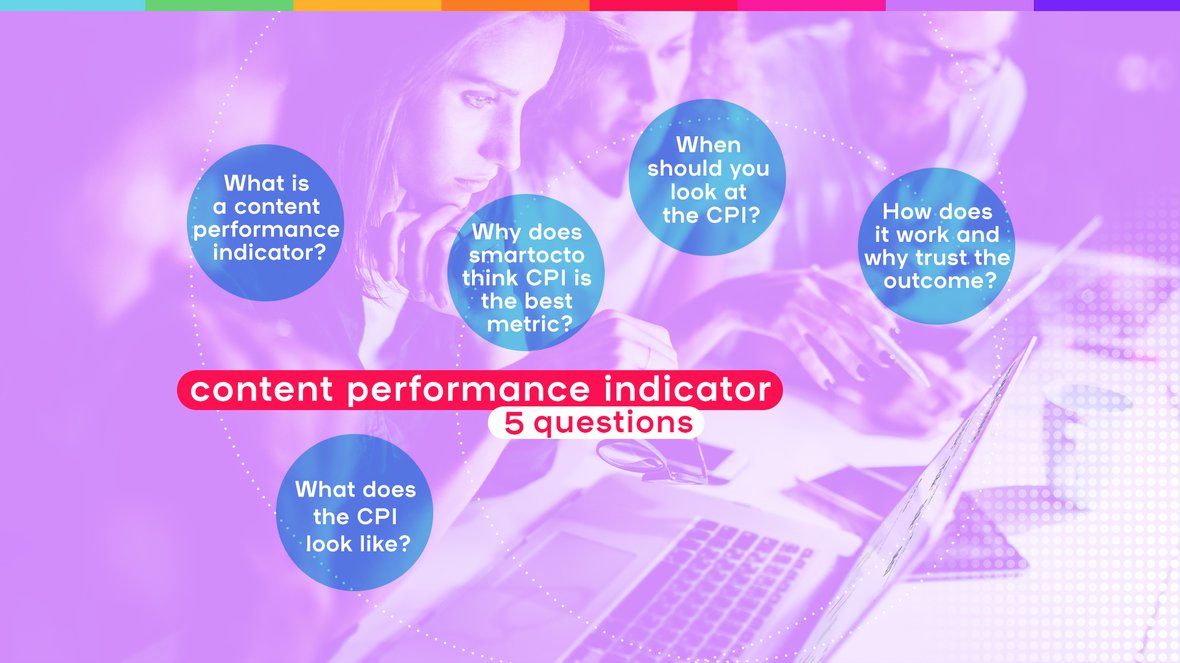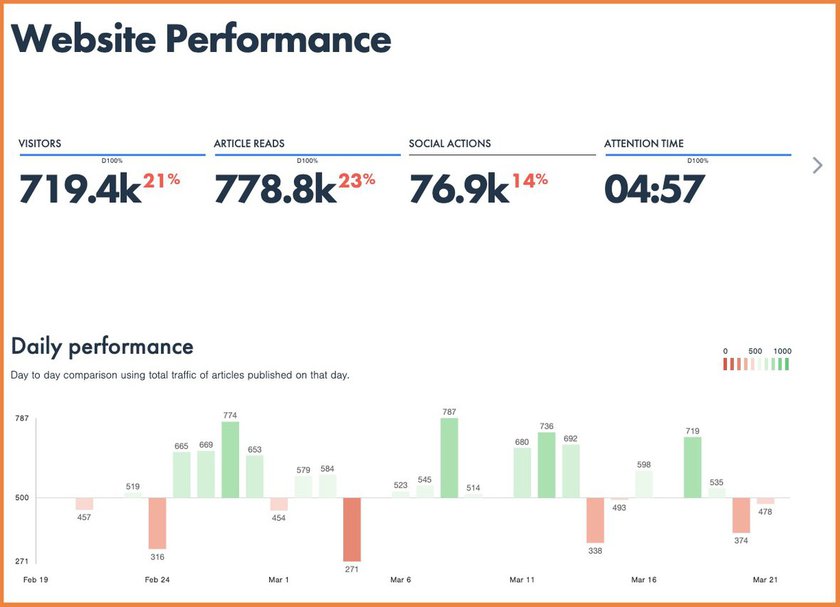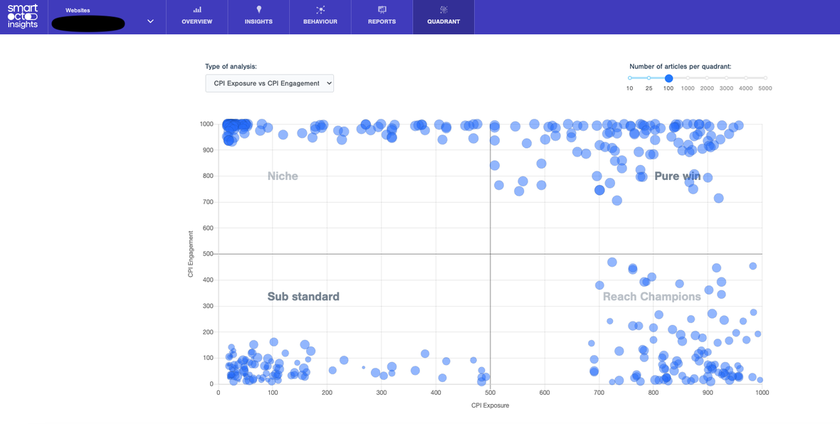When should you look at the CPI?
The timing for reviewing the CPI depends on your role within the company. Some editors prefer to check the top 5 articles daily to see what resonates with the audience. This information can be used to work on follow-up content for the next day, for example.
Data analysts, editors-in-chief, or top management might focus on longer-term trends. They can review data from the past year or compare year-on-year performance. Is the performance improving or declining? Can we find reasons in the data for any changes? For answering such questions, the CPI provides valuable insights.
In smartocto Real Time, the CPI is not displayed as the number can fluctuate rapidly. "We visualise this information solely in our historical data feature called Insights that is often used for strategic analysis," says Milena. "In the real-time features, the focus lies elsewhere. There, you mainly want to see how many visitors are coming from where and what you can do to distribute the content better, like placing it in a newsletter. Stuff you can do immediatelly to improve the results."
How does the algorithm work, and why should you trust the outcome?
Similar to how TikTok doesn't reveal the actions that determine which video comes next or how Spotify doesn't disclose how personalised playlists are formed, smartocto cannot divulge the exact process behind the outcome (CPI). It remains a trade secret. It took time and the final version came from many tests on a large amount of articles from multiple clients and by learning from the success or fails of those tests.
However, this doesn't mean we don't provide any insight into its components. "Think of it like a dish served in a restaurant," says Milena. "We can tell you the ingredients, but we won't reveal the exact proportions or preparation. Customers rarely inquire about this. If they do, it's usually data analysts accustomed to working with algorithms."
To convince clients, Milena mentions that smartocto was founded by people with a background in the media industry. “Therefore, we understand the challenges faced by editorial teams and what matters to them.”
However, even the CPI isn't always a perfect solution, adds Milena. "You also need your journalistic instinct to determine if a topic is important or could become significant. The CPI and any other scores from the system mainly help you understand your audience better and see the forest - not just the trees."





